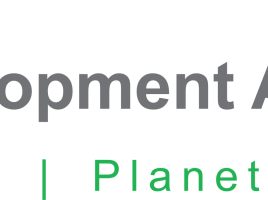Future we Want
Envision India in 2047, celebrating 100 years of independence. Imagine a India where development means living in a healthy ecosystem with peace, justice and dignity for all; a India where prosperities are distributed fairly; a India where every child is educated and has access to nutritious food; a India where the aspirations of our youth are met; a India where clean water and sanitation is available for all; a India that is governed with strong political and institutional relations that are transparent, accountable and participatory. In essence, we are living in a India where there is happiness and fulfilment together with environmental well-being. What we have achieved is the integration of the three components (economic, social and environmental) of sustainable development as interdependent and mutually reinforcing pillars.
The question is can the current pathway lead us to such a future?
Is it possible to boot-strap the currently poor communities to ‘horse leap’ into such a level of living?
How do we influence the consumption patterns of our burgeoning middle class?
What should be the scale of such a transition?
How do we control the pandemics across national boundaries in today’s hyperlinked world?
How do we jettison wealth accumulation as the central theme in development?
The Millennium Development Goals (MDGs) gave expression to the need to move ‘beyond growth’ by looking at other dimensions of development such as the state of poverty, hunger, health and education amongst others. While the MDGs have been fairly successful, the recent global financial meltdown has shifted our attention once again towards Gross Domestic Product (GDP) growth concurrently increasing the demand of official development assistance by low income countries. Now, as the MDGs are nearing their target date of 2015, there is an opportunity for us to re-define the future we want and construct a responsive framework for the same.
In the global debate towards the Post-2015 framework, ‘well-being’ with inclusive growth and poverty eradication have appeared as pertinent elements. This will demand deep structural changes in area of global economic, social and political life with all countries working collectively for a transformative and universal Post-2015 agenda. We need to summon a common understanding and definition of an economic, social and environmental transformation.
What are the means of implementation for such a transformation? The notion of means of implementation includes drivers such as technology, markets, finance, institutional arrangements, capacity building, training and awareness and their direct and indirect implications for a transformative development. For example, creation of a technology innovation system that excels in its different stages of research and development, financial access and diffusion in market and effortlessly bridges the gaps amongst them. Similarly, we require access to both private and public financial sources which act as complements rather than substitutes to each other. They are needed to correct market failures, ensure long –term investment in resource efficient infrastructure, foster innovation and new technologies, national public goods, stimulate growth of small and medium enterprises, create sustainable, green, dignified jobs and income and other vital features of an inclusive society like social protection, access to basic needs and guarantee gender equality, amongst others.
The pathway to our future is to shift from a ‘one size fits all’ approach towards a unified understanding of development. We need to galvanise political will and international co-operation allowing each country to play a role as per its milieu, strengths and capabilities under the umbrella of common but differentiated responsibility.
Yes, each country will have its own agenda of goals and objectives; however the overarching objectives may give rise to conflicts between global, national and local objectives, and create diverging interests and points of view amongst different social groups. Therefore, reaching an agreement on how to address sustainable development challenges requires a degree of pluralism which pivots on distinguishing between needs and the best means to achieve those needs.
We have to dream big and we need to fight hard to make this dream a reality!




Leave a Reply